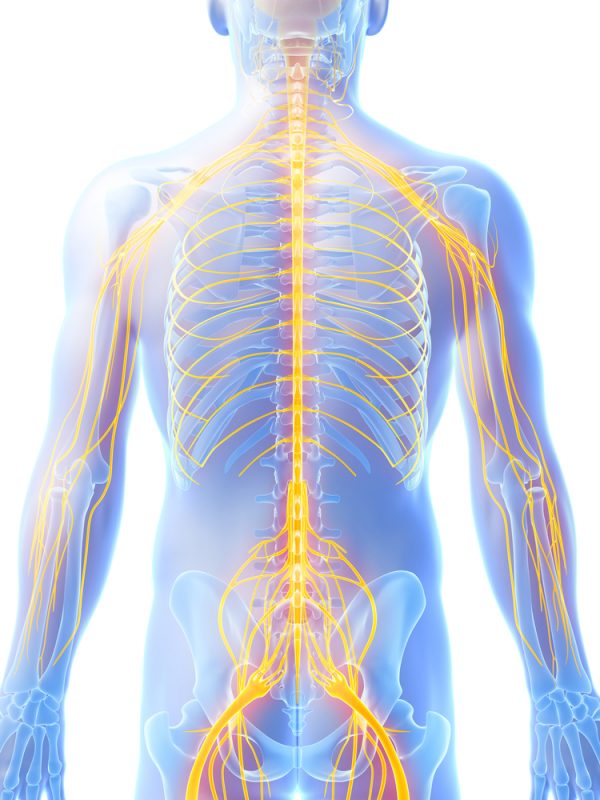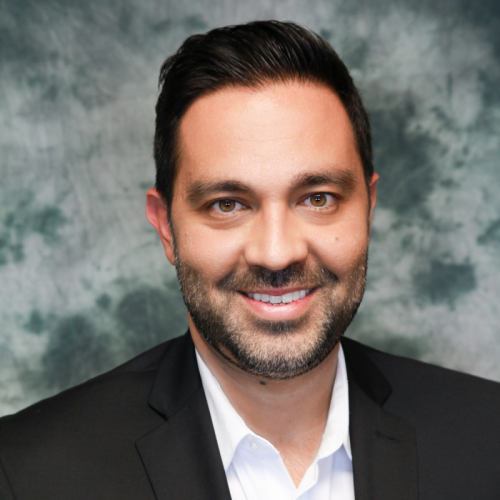Prolotherapy
Prolotherapy
A non-surgical orthopedic procedure that stimulates the
body’s healing processes to strengthen and repair injured
and painful joints and connective tissue.

1 hour Procedure
The entire process takes approximately one hour and patients are sent home the same day.

Non Surgical
PRP is a non-surgical procedure. The procedure is simple and is performed in the office.

Outpatient
The entire process takes approximately one hour and patients are sent home the same day.
Traditional Prolotherapy
The goal of Prolotherapy is to produce dense fibrous tissues which strengthen the attachment of ligaments, tendons, joint capsules, and fascial structures. By strengthening these areas, degenerative processes can be slowed. As new tissue is formed, hypermobile “loose” joints progressively stabilize.

Traditional Prolotherapy
Neural Prolotherapy (NPT) is one of the newest exciting advances in Regenerative Medicine used to treat neuropathic pain in a variety of musculoskeletal injuries and various pain conditions. Neural Prolotherapy is also known as Neurofascial Prolotherapy, Subcutaneous Prolotherapy, or the Lyftogt technique. Neural Prolotherapy is the injection of a medical-grade sugar (either dextrose or mannitol) just below the skin to promote healing of injured nerves and restoration of tissue function.
Neural Prolotherapy was developed by New Zealand physician Dr. John Lyftogt, who has been using this method to treat musculoskeletal injuries and various pain conditions over the last decade with outstanding results.
How are they different?
Neural Prolotherapy and traditional Prolotherapyshare many similarities, but also some key differences. Both treatments promote healing and result in pain relief and functional restoration, but each uses different concentrations of dextrose as well as a different technique for injections.
Traditional Prolotherapy uses a higher concentration of dextrose and is injected deeper in the affected area to promote healing and repair of connective tissues such as ligaments and tendons. Neural Prolotherapy uses a much lower concentration of dextrose and is injected at multiple points just below the surface of the skin to target subcutaneous nerves to reduce neurogenic inflammation. Because it is injected just under the skin, Neural Prolotherapy is less invasive than traditional Prolotherapy.
PRP Therapy is good for treating:
Knee Pain
Osteoarthritis
Meniscus Tears (Medial, Lateral)
Chondromalacia Patella
Tendon Injuries (Patellar Tendonitis, Quad Tendon)
Ligament sprains or tears (MCL, LCL, ACL)
Hip Pain
Osteoarthritis
Hip Labrum Tears
SI Joint Dysfunction
Greater Trochanteric Bursitis
Iliotibial Band (ITB) Syndrome
Shoulder Pain
Osteoarthritis
Rotator Cuff Tendinitis
Tendonopathy
Partial Tears
Labrum Tear
Bicipital Tendinitis
Elbow Pain
Lateral Epicondylitis (Tennis Elbow)
Medial Epicondylitis (Golfers Elbow)
Wrist or Hand Pain
Osteoarthritis
DeQuervain’s Tenosynovitis
Ankle or Foot Pain
Achilles Tendinitis or Partial Tears
Plantar Fasciitis
Ankle sprains/ligament injury
Spine Pain
Facet Joint Arthropathy
Herniated Discs
Radiculopathy
Annulus Tears
Sacroiliac (SI) Joint Dysfunction

If you are looking at this review, don’t wait any longer, as you have found the best. It doesn’t get any better. Dr. Charchian knows his stuff!!! A+++
Dennis W.
Los Angeles
Frequently Asked Questions
General
No. Prolotherapy is not covered by insurance companies at this time.
Prolotherapy is effective in treating pain syndromes associated with lax, weakened, or elongated tendons and ligaments in a variety of areas including the neck, back, knee, shoulder, hip, elbow, wrist, hand, foot, and ankle.
Unlike steroid (cortisone) injections which provide temporary pain relief by inhibiting inflammation, Prolotherapy induces a mild inflammatory response to stimulate healing. Because Prolotherapy works to repair weak and painful joint areas, it is a long-term solution rather than a temporary measure such as drugs or Cortisone.
Prolotherapy is considered safe when administered by a properly trained physician. Injections are done under sterile conditions to minimize the risk of infection. Risks of Prolotherapy are similar to conventional joint injections. Possible adverse effects include local swelling, bruising and transient pain.
Some patients prefer to go home and rest after treatment while others continue work or other activities immediately after treatment. Strenuous workouts or sports may need to be stopped or modified for two or three weeks after injections to give the repaired tissue a chance to mature.
While each case is unique and treated on an individual basis, most patients respond to 3-4 treatments depending on how long the injury has been present as well as the degree of the damage. Treatments are typically spaced 2-3 weeks apart depending on the condition being treated and the patient’s response to the treatment.
Most patients tolerate the procedure well with local anesthesia (lidocaine). Because the treatment induces a mild inflammatory reaction as part of the healing process, you may experience some stiffness or soreness for 3-5 days following the injection. Pain can be controlled with pain relievers if needed.
The dextrose, which is an irritant, is hypothesized to initiate a mild inflammatory process to recruit the body’s natural repair mechanisms and start the healing cascade. The result is repair and growth of new ligament and tendon fibers that strengthen lax, weakened, or elongated tendons to restore strength and function.
The concept of creating irritation or injury in order to stimulate healing dates back to Roman times where hot needles were inserted into the shoulders of injured gladiators.
In the US, Prolotherapy originated in the 1950s by American surgeon Dr. George Hackett who used a sclerosing agent in weakened or elongated ligaments to make them stronger. Hackett reasoned that if weak ligaments were the cause of most joint and ligament pain, strengthening them would resolve the pain. He was quite successful, publishing 16 articles and a textbook on his procedure, and claiming an overall 80% success rate. In 1955, Dr. Gustav Hemwall became acquainted with George Hackett at a medical meeting and started practicing prolotherapy shortly thereafter. Dr. Hemwall is regarded as a pioneer of Prolotherapy, and taught the treatment to numerous physicians until his passing in 1998.
Procedure
No. Neural Prolotherapy is still not covered by insurance companies at this time.
Neural Prolotherapy is considered safe when administered by a properly trained physician. In fact, the solution (D5W) is the same solution used in IV bags in emergency rooms and hospitals. Injections are done under sterile conditions with minimal risk of infection. While uncommon, possible adverse effects include local swelling, bruising and mild temporary pain.
While each case is unique and treated on an individual basis, most patients respond to 5-8 treatments depending on how long the injury has been present as well as the degree of the damage. Treatments are typically spaced 1-2 weeks apart.
Most patients notice an immediate reduction of pain immediately after the first injection. This initial analgesic effect may last anywhere between hours to days. Pain is generally reduced by 10-20% with each subsequent treatment as the tissue is progressively healed.
Neural Prolotherapy is generally very well tolerated, even without local anesthetic which is generally required for other types of injections. The injections are administered with very small and short needles just beneath the surface of the skin. Multiple injections are performed along the course of subcutaneous nerves. Some points may result in mild discomfort, and cold spray can be used to make the patient more comfortable.
Neural Prolotherapy solution contains either 5% Dextrose in sterile water (D5W) or 5% Mannitol in sterile water (M5W). Both Dextrose and Mannitol are sugars originally derived from a plant sources.
Neural Prolotherapy was developed by New Zealand physician Dr. John Lyftogt, who has been using this method to treat musculoskeletal injuries and various pain conditions over the last decade with outstanding results.
The theory behind Neural Prolotherapy is based on “Hilton’s Law”, named after British surgeon Dr. John Hilton. An extraordinary anatomist, Dr. Hilton noted that the nerve that innervates a joint also innervates the skin overlying that joint and the muscles that move that joint. Using this simple model, Dr. Lyftogt hypothesized that irritation to a nerve that supplies sensation to the skin over a joint may also cause dysfunction and pain to the muscles and tissue around that joint.
It has long been known that dextrose in traditional prolotherapy promotes healing in connective tissues such as ligaments and tendons. Because nerves also contain connective tissue, Dr. Lyftogt postulated that dextrose could allow for the same healing in nerves. He injected small amounts of dextrose under the skin which resulted in decreased swelling, reduced pain, and improvement of function.
Dr. Lyftogt postulated that restoration of subcutaneous nerve function (those just beneath the surface of the skin) will lead to healing in deeper structures and reduction in pain. This method to treat musculoskeletal injuries and pain conditions has been used over the last decade with outstanding results, and Neural Prolotherapy is now being taught around the world.
Neural Prolotherapy is effective in treating nerve pain associated with injuries to joints, muscles, tendons, and ligaments. Treatment areas include the neck, back, knee, shoulder, hip, elbow, wrist, hand, foot, and ankle.
Neural Prolotherapy has also been shown to be effective with chronic pain after surgical procedures such as total knee replacements and Failed Back Surgery Syndrome. These patients often find relief when other traditional treatment options have failed.
When tissue is injured, it causes a release of pro-inflammatory substances (e.g. Bradykinin, Prostaglandins) that activate a channel on nerves called the “Transient receptor potential V1” (TrpV1) cation channel, also known as the capsacin receptor. When this channel is turned on, it results in nerve release of substances that cause inflammation (substance P and calcitonin gene related peptide (CGRP)) leading to leaky blood vessels (swelling), hypersensitivity, and painful sensations.
It is postulated that dextrose and mannitol, the active ingredients of Neural Prolotherapy, bind to and inhibit the TrpV1 nerve receptors, preventing this cascade and restoring normal nerve function.
